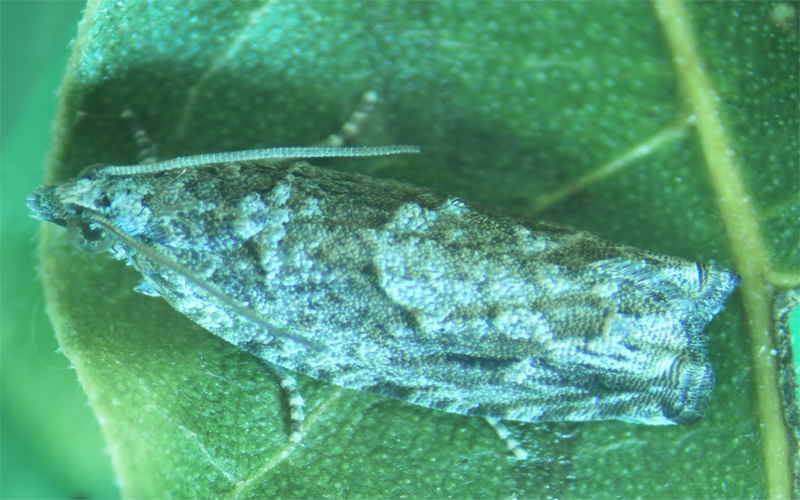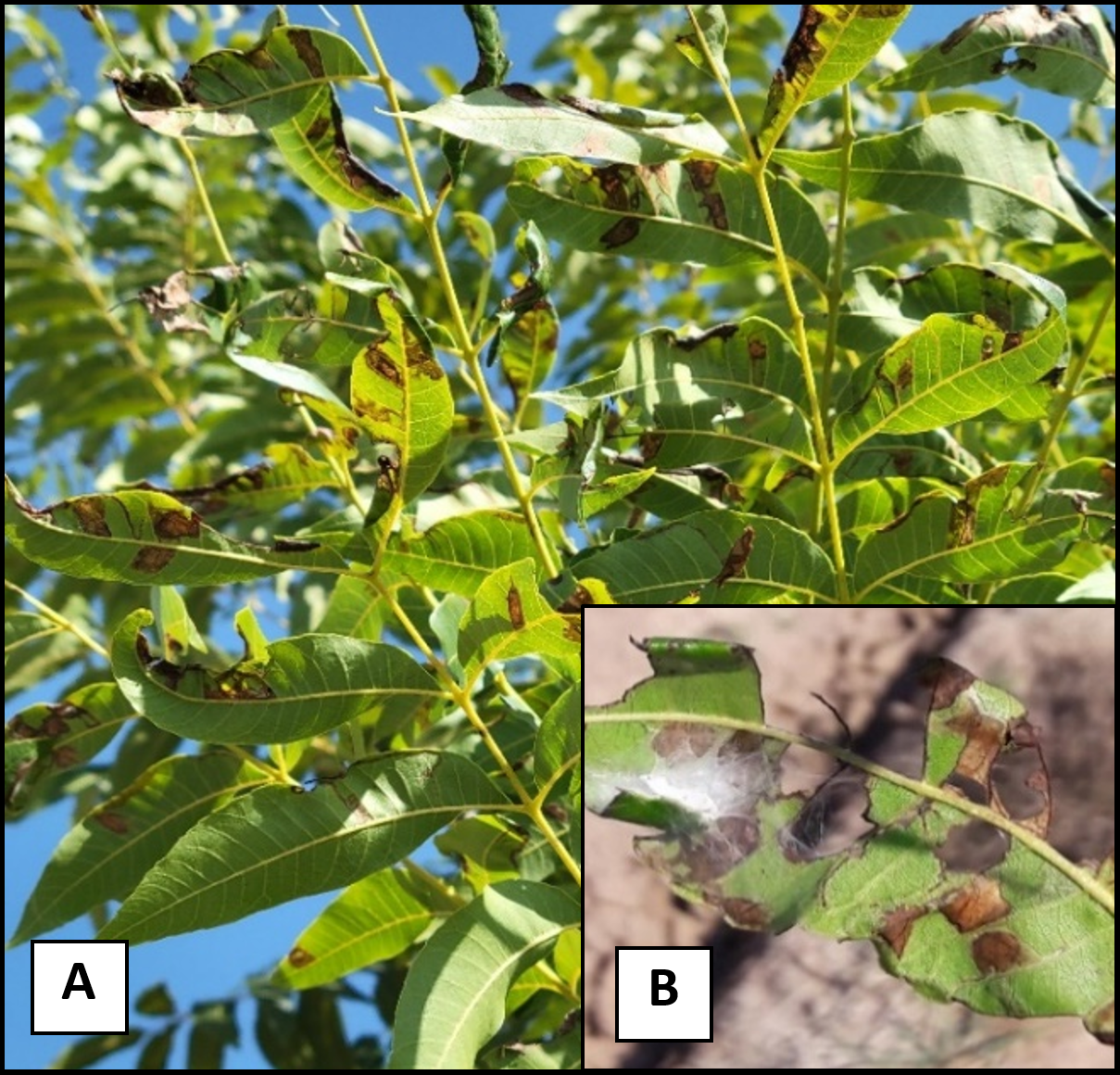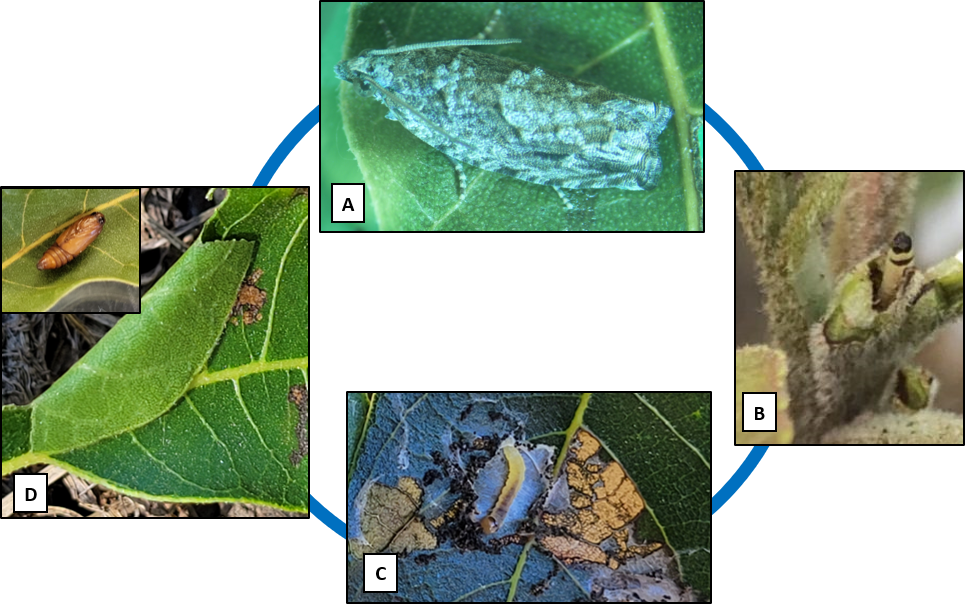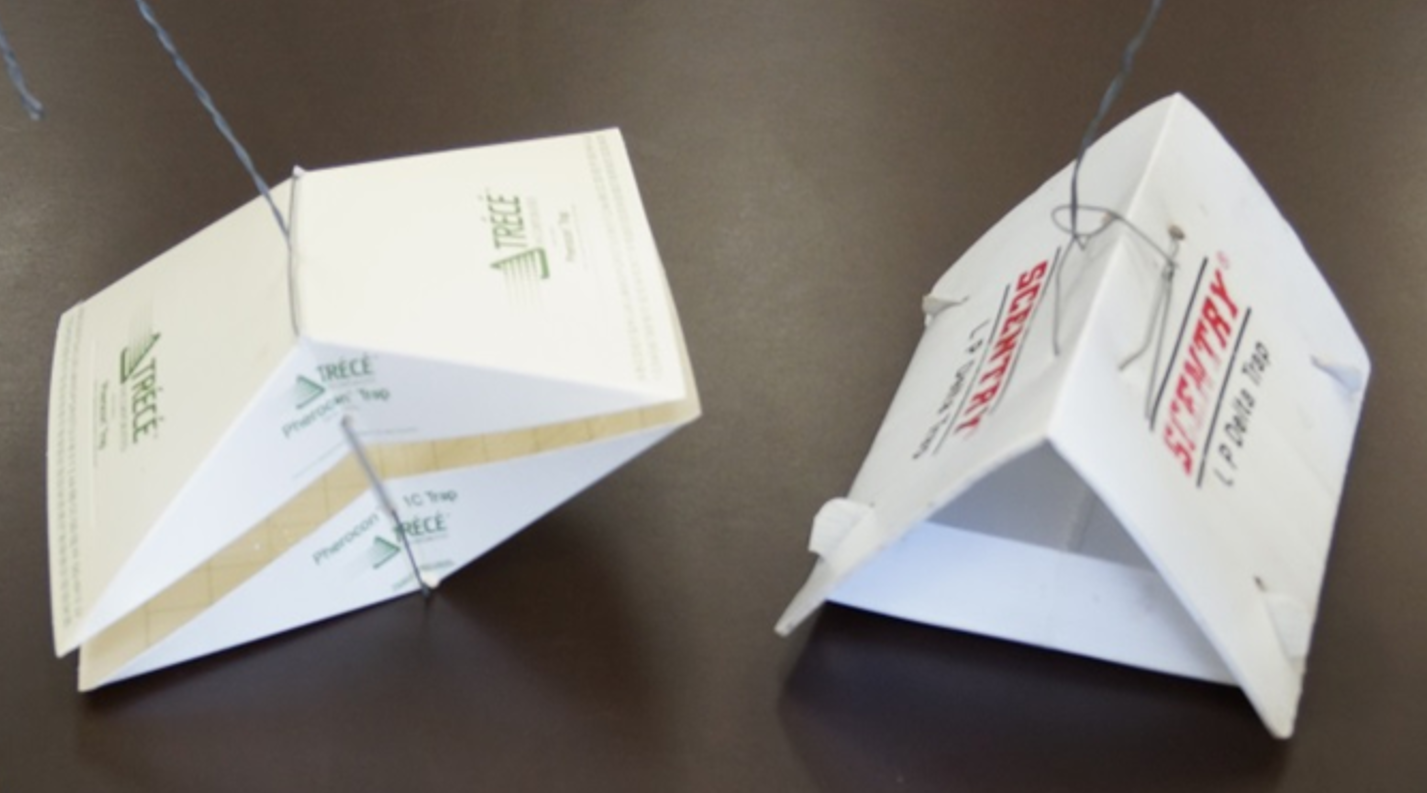(Gretchena bolliana Slingerland)

The pecan bud moth is a native pest to eastern pecan growing regions (Texas to the eastern coast). Sightings of bud moth occurred within Dona Ana County late 2021 growing season. In response, NMDA has initiated surveys for budmoth during the 2022 growing season and have observed a small number of adult bud moths in baited survey traps. While low winter temperatures do kill off a percentage of adult moths, the remaining adult moths survive winter and have maintained an established population.

In older trees, larvae feeding appears in new foliage growth on the outer edges of the canopy (Picture 1A and 1B), but larvae feeding can move towards the inner canopy as the population persists. Late season populations can feed on pecan shucks if they haven’t dried out by leaf drop, which may lead to an increase in the number of sticktights.

The typical lifecycle can be seen in Picture 2. Major economic damage caused by pecan bud moth is primarily seen in nursery stock and newly transplanted trees. Larvae feeding on terminal buds and shoots can lead to stunting, and heavy infestations can also lead to defoliation. For these reasons, it is recommended that nursery and transplanted trees be frequently monitored and treated early.

Wing traps (Picture 3) have been placed to monitor for bud moth populations during the pecan growing season. These sticky traps capture adult moths attracted to the placed pheromone. Adult moth traps allow the state to monitor for the presence of pecan bud moth in locations where they may not have been previously detected, the density of a population in a surveyed area, and provide a status of the population becoming established in the area.
Keep this Pest out of the West
This is a pest native to southern pecan growing regions but is invasive to western pecan growing areas of West Texas, New Mexico, Arizona, and California. The safest direction to move in-shell pecans, nursery trees, and pecan-related equipment (tractors, shakers, supersacks, etc.) is East.
If you must move in-shell pecans or equipment West, contact your state’s department of agriculture for information on quarantines and treatment options.
